
Finding a Vegan Keto Diet Food List can seem difficult to many.
Losing weight with ketosis can seem like an impossible task to people on a vegan diet. After all, a ketogenic diet focuses heavily on meat, cheese, and fat to help a person lose weight. These types of foods are impossible for the average vegan to integrate into their diet.
As a result, many vegans may ignore the benefits of ketosis or try another way to lose weight. This action is unfortunate because ketosis is one of the best ways to lose weight and keep it off. That’s because it uses your natural fat-burning methods to target problematic stores of fat and eliminate them from your body.
Thankfully, there are plenty of foods and food types that a vegan can eat to trigger ketosis on a ketogenic vegan diet. That’s why we are going to highlight 23 types of food that vegans like you can eat to burn fat and get into shape more quickly. There’s a good chance you are already eating many of these foods in your diet now, but now you know to focus on them to trigger ketosis promptly and efficiently.
Vegan Keto Diet Food List
-
Tofu
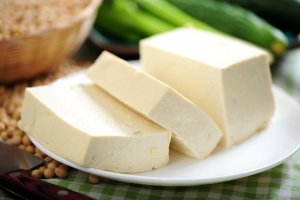 Tofu has long been one of the main sources of protein in a vegan’s diet. However, it will be even more important for those who are attempting vegan ketosis. That’s because it can be prepared in a myriad of different ways in many different types of dishes. Even better, it is low in calories and high in fat, a perfect combination for those who are attempting to trigger ketosis.
Tofu has long been one of the main sources of protein in a vegan’s diet. However, it will be even more important for those who are attempting vegan ketosis. That’s because it can be prepared in a myriad of different ways in many different types of dishes. Even better, it is low in calories and high in fat, a perfect combination for those who are attempting to trigger ketosis.
It can also be integrated into just about every meal you can imagine. For example, you can fry tofu for breakfast as a substitute for bacon. Then, you can sprinkle sliced tofu on a salad to create a delicious lunch that helps trigger ketosis. And for dinner, you can place thick slices of tofu on a pizza carb-free pizza crust made with coconut flour. You just can’t go wrong with this incredible (and tasty) food when on a ketogenic diet.
-
Leafy Greens
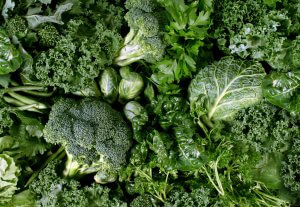 Vegetables are one of the most important food sources for the average vegan. Unfortunately, those who are on a ketosis diet may find themselves unable to eat their favorite veggies. That’s because many of these foods, such as potatoes, are very rich in carbohydrates. As a result, you are going to be limited to eating leafy greens, such as kale, collard greens, Swiss chard, and spinach.
Vegetables are one of the most important food sources for the average vegan. Unfortunately, those who are on a ketosis diet may find themselves unable to eat their favorite veggies. That’s because many of these foods, such as potatoes, are very rich in carbohydrates. As a result, you are going to be limited to eating leafy greens, such as kale, collard greens, Swiss chard, and spinach.
Even dedicated vegans and vegetarians are going to have a hard time being excited about endless spinach salads. However, you can still spice-up your leafy greens by adding various fatty oils to the top. For example, an excellent balsamic vinaigrette is reasonably low in carbohydrates (2.7 grams per tablespoon) and helps to make your salad a little tastier. Pairing it with tofu and nuts can also make it more delicious.
-
MCT Oil
MCT oil is a keto-friendly topping that can be used in a variety of different ways. For example, you can add it to kale shakes to increase their flavor and make them easier to enjoy. However, you can also use a dose of MCT oil as a dressing for the salads you’re likely to eat during your ketosis diet. Even better, MCT oil is not just rich in flavor but high in the fatty acids you need to trigger ketosis.
In fact, MCT oil is crucial for a ketosis diet because it is one of the most abundant sources of fatty oils on the market today. This point makes it a perfect choice for vegans who have a hard time tolerating cheese and protein substitutes. It also helps to diversify your flavor options while on this diet and keep you from getting bored of your dietary routine and falling off the ketosis bandwagon.
-
Avocados
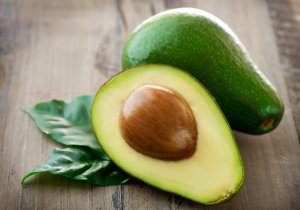 Another aspect of the ketosis diet that may upset the average vegan is the lack of fruits you can eat. These delicious foods are simply too high in sugar for this kind of diet. As a result, you are going to cut out just about every type of fruit from your meal plans that you can imagine. Thankfully, avocados (and a few others we’ll mention later) can be used to increase the fat content of your diet and keep you on track for ketosis.
Another aspect of the ketosis diet that may upset the average vegan is the lack of fruits you can eat. These delicious foods are simply too high in sugar for this kind of diet. As a result, you are going to cut out just about every type of fruit from your meal plans that you can imagine. Thankfully, avocados (and a few others we’ll mention later) can be used to increase the fat content of your diet and keep you on track for ketosis.
That’s because avocados are rich in healthy fats and very low in carbohydrates. They are also very easy to prepare for every type of meal. In fact, their flavor is diverse enough to pair with just about any kind of dish. Add a dollop of homemade guacamole to the top of your tofu to create a mouth-watering blend of tastes. However, you can also add sliced avocados to your salads to give them a satisfying crunch and a more enjoyable flavor.
-
Many Types of Nuts
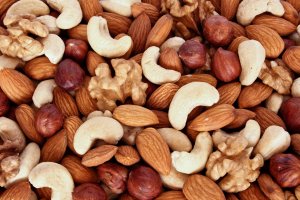 If you are a fan of almonds, macadamia nuts, or walnuts, stock up on them when starting a ketosis diet. These nuts are naturally low in carbohydrates and high in healthy fats. Even better, many of them are also rich in protein and can be used in a multitude of dishes. The best nuts for this diet are typically almonds. That’s because they have the least carbohydrates and a rich array of nutrient types.
If you are a fan of almonds, macadamia nuts, or walnuts, stock up on them when starting a ketosis diet. These nuts are naturally low in carbohydrates and high in healthy fats. Even better, many of them are also rich in protein and can be used in a multitude of dishes. The best nuts for this diet are typically almonds. That’s because they have the least carbohydrates and a rich array of nutrient types.
However, you can also sprinkle walnuts, pecans, cashews, and pistachios on your meals to replace the fat you’d otherwise get from red meat. And for those who don’t like coconut flour, nut-based types can be an excellent substitute for baking. In fact, it is possible to use these powders to cook pizza dough and create delicious alternatives for bread. The possibilities are endless for the imaginative and talented baker.
-
Mushrooms
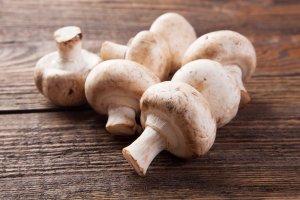 If you’re a fan of eating the various form of fungi on the market, you’re in luck! They are okay to eat on a ketosis diet. Well, most types are okay. Shiitake, King Oyster, and Lion’s Mane mushrooms are the best to eat when you’re on this type of diet. That’s because they contain a surprisingly high amount of fat and almost no carbohydrates. They are also delicious can be used in just about any meal.
If you’re a fan of eating the various form of fungi on the market, you’re in luck! They are okay to eat on a ketosis diet. Well, most types are okay. Shiitake, King Oyster, and Lion’s Mane mushrooms are the best to eat when you’re on this type of diet. That’s because they contain a surprisingly high amount of fat and almost no carbohydrates. They are also delicious can be used in just about any meal.
For example, they fry up beautifully in coconut oil for breakfast. This meal decision gives you a burst of protein right when you need it the most. However, these foods can also be baked with tofu to create a sumptuous supper that satisfies a variety of tastes and meal preferences. Make sure to clean these mushrooms before cooking to get the most out of their flavor.
-
Berries
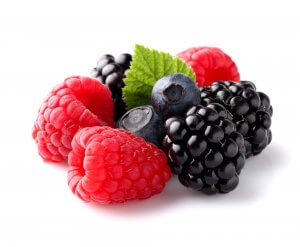 While berries are among the most popular and delicious types of fruits available on the market, they are also naturally low in sugar. As a result, you can integrate them into your ketosis diet on a limited basis. You can safely eat about one-half to a full cup of blueberries without falling out of ketosis. One healthy way to integrate these foods into your vegan diet is to create a blueberry and almond snack.
While berries are among the most popular and delicious types of fruits available on the market, they are also naturally low in sugar. As a result, you can integrate them into your ketosis diet on a limited basis. You can safely eat about one-half to a full cup of blueberries without falling out of ketosis. One healthy way to integrate these foods into your vegan diet is to create a blueberry and almond snack.
One of the best methods for preparing this type of snack is mixing them up in a bag and eating a handful or two between meals. This action helps to create a healthier snack that you can eat while you are on the go. It also helps to avoid the kind of hunger pangs that can make keto diets so tricky. Just make sure to prevent splurging on these foods, or you may end up ruining your keto diet.
-
Fermented Foods
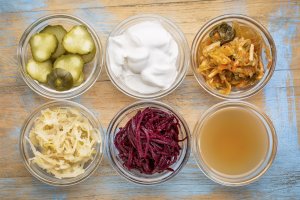 Foods that have been fermented are a great choice for a ketosis diet. That’s because they have a potent flavor that fills you up quickly. However, they often have plenty of fat that increases the effectiveness of your ketosis diet. If you are a fan of Natto, Kim Chi, or sauerkraut, you can easily integrate them into your vegan diet to boost your chances of triggering ketosis in your body.
Foods that have been fermented are a great choice for a ketosis diet. That’s because they have a potent flavor that fills you up quickly. However, they often have plenty of fat that increases the effectiveness of your ketosis diet. If you are a fan of Natto, Kim Chi, or sauerkraut, you can easily integrate them into your vegan diet to boost your chances of triggering ketosis in your body.
Typically, it is easier to use these kinds of food at lunch or dinner time. That’s because they are often too severe to handle in the morning. However, you may be able to sprinkle a little Kim Chi on your tofu or mushrooms when frying them up in the morning. Avoid overdoing it with fermented foods, though, as they can also drive a person away from a diet if they are eaten too regularly. Consider them an occasional spice to use once or twice a week.
-
Sea Vegetables
While not everyone enjoys kept, dulse, or bladderwrack, these vegetables are a great alternative to leafy greens. If you get sick of eating nothing but spinach salads for lunch, replace your greens with these veggies. They are rich in protein and have almost no carbohydrates. Even better, they have a unique and potent flavor profile that makes them enjoyable in many types of dishes.
For example, you can wrap pieces of tofu or tempeh in sea vegetables and fry them up to create a healthy lunch. You can also use sea dulse as a quick burst of protein when you wake up in the morning. Flavoring them with the oils or dressings on this list can also make them easier to tolerate.
-
Olive and Coconut Oil
 Cooking oils are an essential tool for any ketosis diet. However, you need to cut out every type of oil from your diet except for olive and coconut oils. These oils have almost no carbohydrates and are a healthy source of delicious fats. Whenever you fry your tofu or any types of foods, make sure to do so in these oils. They are not only healthier than other types but create less problematic grease.
Cooking oils are an essential tool for any ketosis diet. However, you need to cut out every type of oil from your diet except for olive and coconut oils. These oils have almost no carbohydrates and are a healthy source of delicious fats. Whenever you fry your tofu or any types of foods, make sure to do so in these oils. They are not only healthier than other types but create less problematic grease.
Even better, they add a little extra taste to your meals that other types of oils cannot. While MCT oils can also add a rich flavor profile to your food, some people may find it too strong. As a result, coconut and olive oils are an excellent choice for someone who can’t quite handle the taste of MCT oil but who also wants to continue frying while on their ketosis diet.
-
Above-Ground Vegetables
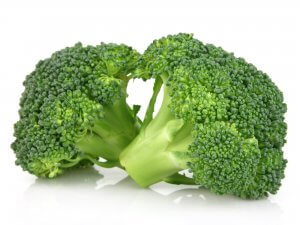 While we previously mentioned that most vegetables were unusable for vegan ketogenic diet, we neglected to mention that above-ground vegetables are safe. That’s because they don’t possess the same kind of carbohydrate content that is common in root vegetables like potatoes. Broccoli and cauliflower are particularly beneficial for this type of weight-loss diet. However, zucchini can also be integrated into your meal plans to add a little variety.
While we previously mentioned that most vegetables were unusable for vegan ketogenic diet, we neglected to mention that above-ground vegetables are safe. That’s because they don’t possess the same kind of carbohydrate content that is common in root vegetables like potatoes. Broccoli and cauliflower are particularly beneficial for this type of weight-loss diet. However, zucchini can also be integrated into your meal plans to add a little variety.
That’s because these three vegetables are low in carbohydrates and rich in protein. And the few carbs that they do possess are based on fiber and not sugar. In fact, don’t forget that you can and should eat fiber while on a ketogenic diet. For most people on a ketogenic diet, a fiber supplement is a good idea because it can help avoid the kind of severe constipation that is so common with this type of food plan. However, eating broccoli and cauliflower can help provide you with much of this protein and fiber to keep your bowels safe.
-
Various Types of Dairy Supplements
Dairy foods are one of the primary food sources for a normal ketogenic diet. For example, they can be used to create delicious chips, taco shells, and to flavor foods that would otherwise be too bland to enjoy. In a ketogenic diet for vegans, this type of cheese is impossible to eat. However, there are many fat-rich and healthy cheese substitutes that you can use to achieve the same effect.
For example, unsweetened coconut yogurt is an excellent alternative for non-vegan types. While it isn’t always easy to enjoy on its own, it can also be used in various baking recipes to add a little flavor and texture to your dishes. On a similar note, coconut cream is a great baking substitute that makes your meals even more delicious. And most vegan cheeses can be used to flavor your meals. Just check the carb count to make sure it isn’t too high.
-
Low-Carb Sweeteners
If you are having a hard time enjoying your ketogenic diet, it might not be a bad idea to consider adding some sweetness with some low-carb sweeteners. Many brands of these sweeteners on the market are completely safe and adaptable for a vegan diet. Stevia is one of the most popular because of its natural design. It is also not addictive and has fewer side effects when compared to other types of sweeteners. However, you can also use Monk Fruit to flavor your foods and make them tastier.
However, make sure you avoid using too much of these sweeteners on your food. That’s because they can trigger carb cravings that are hard to resist and control. For example, their sweet flavor may make you suddenly crave sugar-rich foods, such as bread and doughnuts. While it is easy to get back on the ketogenic bandwagon when you’ve fallen off, it can set back your diet routine and weight-loss goals. As a result, it’s best to use these sweeteners on a limited basis.
-
Flax Seed
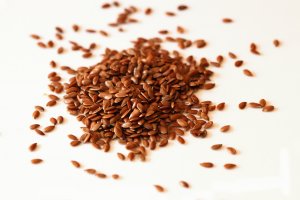 Flax seeds can be used in a variety of different recipes and multiple meal types when you are on a ketogenic diet. They provide you with a lot of healthy fats and are rich in protein. Even better, they possess almost no carbohydrates beyond some fiber. As a result, they can be a healthy way to replace eggs and other types of foods in your diet.
Flax seeds can be used in a variety of different recipes and multiple meal types when you are on a ketogenic diet. They provide you with a lot of healthy fats and are rich in protein. Even better, they possess almost no carbohydrates beyond some fiber. As a result, they can be a healthy way to replace eggs and other types of foods in your diet.
While they can be eaten on their own with a little preparation, they are also a great baking substitute. For example, you can add these seeds to almond-flour pancakes to create a delicious and nutty breakfast. Even better, you can use them with coconut flour to make thick and delicious carb-free bread that you can slice thickly and toast for breakfast or lunch.
-
Sunflower Seeds
 Just about any seed is great for a ketogenic diet. That’s because they are high in fat, low in carbohydrates, and delicious. However, sunflower seeds are probably the best for vegans because they are easier to prepare and enjoy. They can also be used in multiple types of meals and as a substitute for some types of foods when baking. Eating them at breakfast is a particularly great way to start the day.
Just about any seed is great for a ketogenic diet. That’s because they are high in fat, low in carbohydrates, and delicious. However, sunflower seeds are probably the best for vegans because they are easier to prepare and enjoy. They can also be used in multiple types of meals and as a substitute for some types of foods when baking. Eating them at breakfast is a particularly great way to start the day.
However, they can also be used as a snack in a method similar to the blueberries and almond mix when mentioned earlier on this list. That said, you should probably still limit your intake of these seeds to no more than one-half cup every day. Unfortunately, they are high in what is known as omega-6 fat. While these fats do add a healthy burst of fat to your ketogenic diet, they can also be inflammatory when consumed at high levels. As a result, your diet should be focused more heavily on other types of foods.
-
Tempeh
This substitute for protein is similar to tofu because both are made out of soybeans. However, it is firmer than tofu and usually easier to prepare. For example, you don’t need to press tempeh to eliminate its moisture in the same way you do with tofu. As a result, tempeh can be a popular way to get protein in your diet when trying to trigger ketosis for weight loss. It works particularly well as a substitute for beef or fish dishes.
However, a few downsides of this food type keeps tempeh a little lower on our list than tofu. First of all, it has a grainier texture that can be hard for some people to enjoy. It also has a more bitter taste than tofu and is usually harder for most people to eat without a struggle. As a result, it often requires a little more flavoring than tofu, which can make it less efficient as a source of healthy and fatty protein.
-
Protein Powders
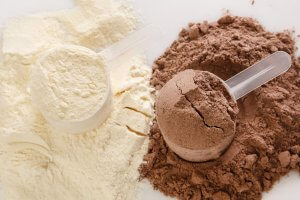 Even with all of these food types available for your ketogenic diet, it may still be hard to get your daily dose of protein. However, a tasty mixture of protein powder can be a useful way to boost your levels of this nutrient. Protein powders can be used in a variety of different ways. For example, you can drink a protein shake in the morning to get the energy you need to get moving.
Even with all of these food types available for your ketogenic diet, it may still be hard to get your daily dose of protein. However, a tasty mixture of protein powder can be a useful way to boost your levels of this nutrient. Protein powders can be used in a variety of different ways. For example, you can drink a protein shake in the morning to get the energy you need to get moving.
However, you can also sprinkle a little bit of these powders on your dishes while baking them. Just make sure not to overdo it when trying this route. That’s because these powders often have a bland taste that can overpower the deliciousness of your other foods. However, they can be a great way to get your body into ketosis and help them stay there for an extended period. Just make sure that they contain no carbohydrates to ensure they are as efficient as possible for your dietary routine.
-
Nut Butters
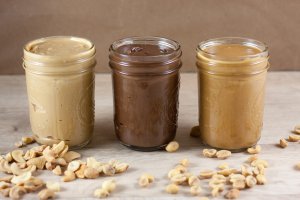 These types of butter alternatives are a great change to regular butter when on a ketogenic diet. That’s because they are high in fat, low in carbs, and easy to use. For example, almond butter can add a delicious boost of flavor to your food that is hard to top. Even better, they can increase the fat content of your food and make it more appropriate for a ketogenic diet. As a result, you can get into ketosis more quickly and stay on it without as much of a struggle.
These types of butter alternatives are a great change to regular butter when on a ketogenic diet. That’s because they are high in fat, low in carbs, and easy to use. For example, almond butter can add a delicious boost of flavor to your food that is hard to top. Even better, they can increase the fat content of your food and make it more appropriate for a ketogenic diet. As a result, you can get into ketosis more quickly and stay on it without as much of a struggle.
Try integrating these butter types into your ketogenic baking decisions on a regular basis. For example, baking bread with flax seeds and almond butter creates a carb-free bread that is delicious and easy to enjoy. It also helps to boost the protein levels of your bread and keep you on the path to total ketosis without sacrificing your favorite dishes. In fact, it can be a particularly beneficial way for bread addicts to stay in ketosis when cravings for carbohydrates strike.
-
Green Beans
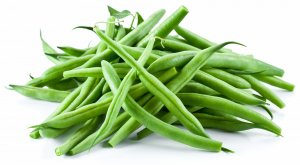 Green beans are a delicious above-ground vegetable that is perfect for vegans trying to go into ketosis. Like other above-ground vegetables, they are high in protein and low in carbohydrates. However, they possess a distinctively crunchy texture and a taste that is adaptable to many dining situations. For example, they can be a useful breakfast food or added to a diverse lunch menu.
Green beans are a delicious above-ground vegetable that is perfect for vegans trying to go into ketosis. Like other above-ground vegetables, they are high in protein and low in carbohydrates. However, they possess a distinctively crunchy texture and a taste that is adaptable to many dining situations. For example, they can be a useful breakfast food or added to a diverse lunch menu.
However, they can also be flavored with various vegan cheese and baked in the oven to create delicious fries. This recipe produces an incredible French fry substitute that is healthier for you and free of all carbohydrates. In fact, this green bean alternative may replace your regular potato fries even after you’ve quit your ketogenic diet. They are just that delicious and unforgettable.
-
Pumpkins
 Pumpkin isn’t something that a lot of people consider eating on a regular basis. However, mashed pumpkins can be a delicious substitute for potatoes when you’re on a ketogenic diet. Simply remove the seeds from a pumpkin, clean the interior fully, smash it into a pulp, remove the harder outer elements, and bake it in an oven. Flavoring it with various nuts and oils makes it even better.
Pumpkin isn’t something that a lot of people consider eating on a regular basis. However, mashed pumpkins can be a delicious substitute for potatoes when you’re on a ketogenic diet. Simply remove the seeds from a pumpkin, clean the interior fully, smash it into a pulp, remove the harder outer elements, and bake it in an oven. Flavoring it with various nuts and oils makes it even better.
And after you’ve removed the pumpkin seeds, flavor them with your favorite keto-friendly oils and bake them in the oven. These all-natural seeds are a great snack that is high in fat and low in carbs. Place them in a sealed plastic bag to keep them fresh for weeks at a time. You can also use these seeds in various baking dishes to improve their flavor even more.
-
Butternut Squash
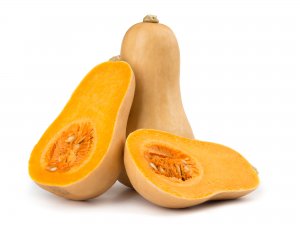 Butternut squash is a delicious type of vegetable that can be used in a variety of different dishes. For example, it can be fried with mushrooms in the morning to create a meal that is delicious and unforgettable. Even better, it can be used as a high-quality substitute for rice. Simply slice it into skinny noodles and bake it to create a rich texture that is hard to top.
Butternut squash is a delicious type of vegetable that can be used in a variety of different dishes. For example, it can be fried with mushrooms in the morning to create a meal that is delicious and unforgettable. Even better, it can be used as a high-quality substitute for rice. Simply slice it into skinny noodles and bake it to create a rich texture that is hard to top.
In fact, butternut squash used in this way is one of the best noodle alternatives for vegans on a ketogenic diet. That’s because they are rich in protein, high in fat, and low in carbohydrates. Even better, they can create rich noodle-based dishes that you couldn’t otherwise eat on a ketogenic diet. Pair them with tofu, mushrooms, green beans, and almond butter for a meal you will never forget.
-
Green Bell Peppers
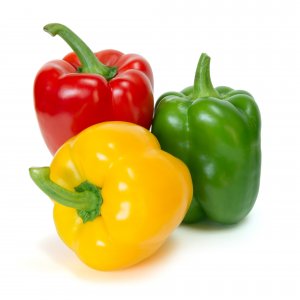 Bell peppers are naturally low in carbohydrates and can be used in a variety of dishes. For example, they can be used to flavor your breakfast foods and the various salads you’re likely to eat at lunch. They can also be used to add a little kick to your tofu at supper and make it even tastier. Those who do not like the texture of peppers can soak tofu in pepper juice to get a similar result. This action also helps to reduce the number of carbs that you are eating in a day.
Bell peppers are naturally low in carbohydrates and can be used in a variety of dishes. For example, they can be used to flavor your breakfast foods and the various salads you’re likely to eat at lunch. They can also be used to add a little kick to your tofu at supper and make it even tastier. Those who do not like the texture of peppers can soak tofu in pepper juice to get a similar result. This action also helps to reduce the number of carbs that you are eating in a day.
Keep in mind that one-half cup of sliced green bell peppers contains about two grams of carbohydrates. That’s why they are lower on our list than some of the other foods we have highlighted. However, their carbohydrate count is still small enough to make them a useful addition to a ketogenic diet. Just make sure that limit yourself to no more than a cup of them every day. This addition will add four grams of carbs to an already restricted diet.
-
Onions
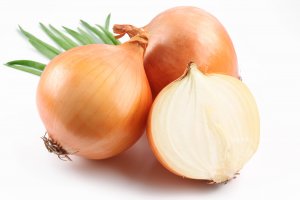 Onions are last on our list of ketogenic foods because of their relatively high level of carbs. One-half cup of onions contains five grams of carbs that are mostly concentrated in sugar. As a result, you can’t fry up onions and smother them on your tofu like you may have done in the past. However, onions can still be used effectively if you carefully limit your intake of them throughout the day.
Onions are last on our list of ketogenic foods because of their relatively high level of carbs. One-half cup of onions contains five grams of carbs that are mostly concentrated in sugar. As a result, you can’t fry up onions and smother them on your tofu like you may have done in the past. However, onions can still be used effectively if you carefully limit your intake of them throughout the day.
That’s because onions are also high in various antioxidants and anti-inflammatory nutrients that can benefit your ketogenic diet. We suggest sprinkling a one-half cup of onions on a dish that you would otherwise consider bland. For example, they can be a useful flavoring for butternut squash noodles. While the five grams of carbs they add to your diet is a little high, its below the 20-50 gram total that you can eat in a day.
Final Thoughts
As you savor the tantalizing flavors of your vegan keto-friendly creations, imagine adding another layer of excitement to your experience. Picture yourself diving into a world where adventure and thrill await at every turn.
But wait, where can you find such an electrifying escape? Look no further than 5Gringo Casino! Yes, it’s not just a destination; it’s an odyssey of exhilaration, where the thrill of gaming knows no bounds.
As you navigate the diverse array of mouthwatering vegan options, why not complement your culinary journey with a detour into the immersive realm of online gaming? At 5Gringo Casino, you’ll discover a treasure trove of captivating games, lavish bonuses, and an ambiance that transports you to new realms of excitement.
Even better, you can create a diverse and unforgettable array of meals that you can use to interest someone who may be looking to start a vegan diet. The foods we have listed above are delicious and diverse in their flavor styles. As a result, you can help a person who is on the fence about becoming a vegan make the plunge into this healthy and ethical eating lifestyle. They will definitely thank you for it later. If you have any more questions, be sure to visit our community forums.
Resources
Ruled: A Comprehensive Guide to a Vegan Ketogenic Diet
Healthful Pursuit: A List of Keto Vegan and Vegetarian Recipes
PETA: Vegan Keto Food Tips and Recipe Suggestions
Table of Contents